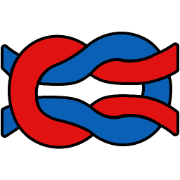Product Introduction
- Langfuse Custom Dashboards is a feature within the Langfuse platform that enables users to create, save, and share tailored visualizations of LLM application metrics, traces, and evaluations. It integrates directly with Langfuse’s native tracing and analytics infrastructure to provide dynamic insights into performance, cost, latency, and quality metrics.
- The core value of Langfuse Custom Dashboards lies in its ability to unify fragmented monitoring and analysis workflows by offering a centralized, collaborative interface for tracking LLM application health. It eliminates the need for external tools by providing built-in customization and real-time data synchronization across teams.
Main Features
- Customizable Metrics Visualization: Users can build dashboards that aggregate data from traces, evaluations, and prompt management systems, with options to visualize metrics like cost per request, latency distributions, and user feedback scores. Dashboards support time-series charts, histograms, and tabular views.
- Shared Views and Collaboration: Teams can save dashboard configurations as reusable templates and share them across projects or organizations, ensuring consistency in monitoring workflows. Permissions are managed at the project or organization level to control access.
- Real-Time Data Integration: Dashboards automatically sync with Langfuse’s tracing and evaluation pipelines, enabling live updates as new data is ingested. This includes support for filtering by metadata (e.g., model version, user ID) and drill-down into individual traces for root-cause analysis.
Problems Solved
- Fragmented Monitoring Tools: Langfuse Custom Dashboards address the challenge of using disjointed tools for LLM observability by consolidating metrics, traces, and evaluations into a single interface. This reduces context-switching and data silos.
- Target User Group: The feature is designed for AI engineers, product managers, and DevOps teams responsible for maintaining and optimizing LLM applications in production environments.
- Typical Use Case Scenarios: Teams use the dashboards to monitor cost spikes after deploying a new model, debug latency outliers across different API endpoints, or track the impact of prompt iterations on user satisfaction scores.
Unique Advantages
- Native Integration with Langfuse Tracing: Unlike standalone analytics tools, Langfuse Custom Dashboards leverage pre-processed trace data (e.g., token counts, model parameters) without requiring manual data pipeline setup. This reduces configuration overhead.
- Open-Source Flexibility: Self-hosted deployments allow organizations to customize dashboards to meet specific compliance or branding requirements, with full access to underlying data models and APIs.
- Unified Workflow: The dashboards are interoperable with other Langfuse features like datasets and evaluation workflows, enabling users to pivot from monitoring metrics to iterating on prompts or fine-tuning models within the same platform.
Frequently Asked Questions (FAQ)
- How does Langfuse Custom Dashboards integrate with existing Langfuse projects? The dashboards automatically pull data from Langfuse Tracing, Prompt Management, and Evaluation modules via native APIs, requiring no additional instrumentation beyond standard SDK setup.
- Can I control access to shared dashboards? Yes, dashboard visibility and editing permissions are managed through Langfuse’s role-based access control (RBAC), allowing admins to restrict views by project, environment, or user role.
- Is historical data available in dashboards? Dashboards include all historical data retained in Langfuse based on your subscription tier (e.g., 30 days for Hobby, unlimited for Pro). Filters can be applied to analyze specific time ranges.
- Do Custom Dashboards support exporting data? Data from dashboard visualizations can be exported as CSV or JSON via the Langfuse UI or API for further analysis in external tools.
- Are the dashboards updated in real time? Metrics refresh automatically as new traces and evaluations are ingested, with a configurable refresh interval (default: 60 seconds) to balance performance and immediacy.
- Can I use Custom Dashboards with self-hosted Langfuse? Yes, the feature is available in all deployment modes (cloud and self-hosted), with identical functionality across versions. Self-hosted users can modify dashboard UI components via the open-source codebase.
